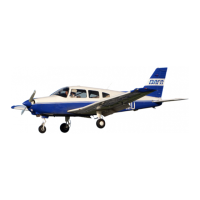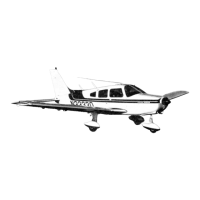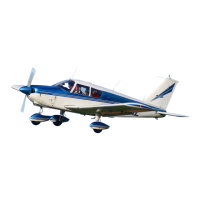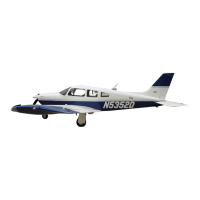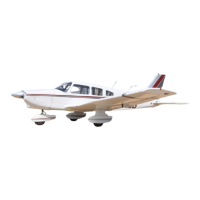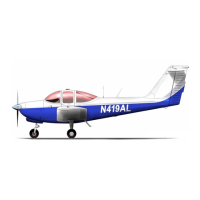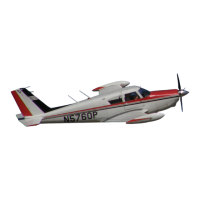PAGE 1
Nov 30/064C7
51-00-00
PIPER AIRCRAFT, INC.
PA-28-161, WARRIOR III
MAINTENANCE MANUAL
GENERAL
Description
The airplane is an all metal semi-monocoque structure with an overall length 23 feet 8 inches. The
fuselage is constructed of bulkheads, stringer and stiffeners, to which all of the outer skin (see Figure 1)
is riveted.
NOTE: The Warrior III Parts Catalog, P/N 761-897, provides detailed views of the individual structural
components.
Windows include a single pane windshield and six side windows. All windows are single pane. A storm
window is located in the forward lower section of the left window and can be opened inward when the
latch is released. The cabin entrance door is located on the right side of the fuselage, above the wing,
and is equipped with a safety latch on the top of the door, which can be operated from the inside or
outside. A door is provided for entrance to the baggage compartment and is located just aft of the right
wing with a key lock installed.
Each wing is an all-metal, full cantilever semi-monocoque type construction with a removable
thermoplastic tip. Installed in each wing ahead of the main spar is a metal fuel tank with a capacity of 25
U.S. gallons each or 50 U.S. gallons total. Attached to each wing is an aileron, flap and main landing
gear. The wings are attached to each side of the fuselage by inserting the butt ends of the main spars
into a spar box carry-through. The spar box is an integral part of the fuselage structure which provides, in
effect, a continuous main spar with splices at each side of the fuselage. There are also fore and aft
attachments at the front and rear spars.
The all metal empennage group is a full cantilever design consisting of a vertical stabilizer (fin), rudder
and stabilator, all with removable thermoplastic tips. The stabilator has a trim tab attached that is
controllable from the cockpit. The stabilator also incorporates a one channel main spar that runs the full
length of the stabilator and hinges to the aft bulkhead assembly of the fuselage.
All exterior surfaces are coated with enamel or acrylic lacquer. As an option the airplane may be
completely primed with zinc chromate or equivalent.
Structural repair methods used must be in accordance with regulations set forth in FAA Advisory Circular
43.13-1, latest revision. To assist in making repairs and/or replacements, Figure 1 identifies type and
thickness of various skin material used.
WARNING: NO ACCESS HOLES ARE PERMITTED IN ANY CONTROL SURFACE.
WARNING: USE OF PATCH PLATES FOR REPAIRS OF ALL MOVABLE TAIL SURFACES IS
PROHIBITED. USE OF ANY FILLER MATERIAL NORMALLY USED FOR REPAIR OF
MINOR DENTS AND/OR MATERIALS USED FOR FILLING INSIDE OF SURFACES IS
ALSO PROHIBITED ON ALL MOVABLE TAIL SURFACES.
Never make a skin replacement or patch plate from material other than type of original skin, or of a
different thickness than original skin. Repair must be as strong as original skin. However, flexibility must
be retained so surrounding areas will not receive extra stress.
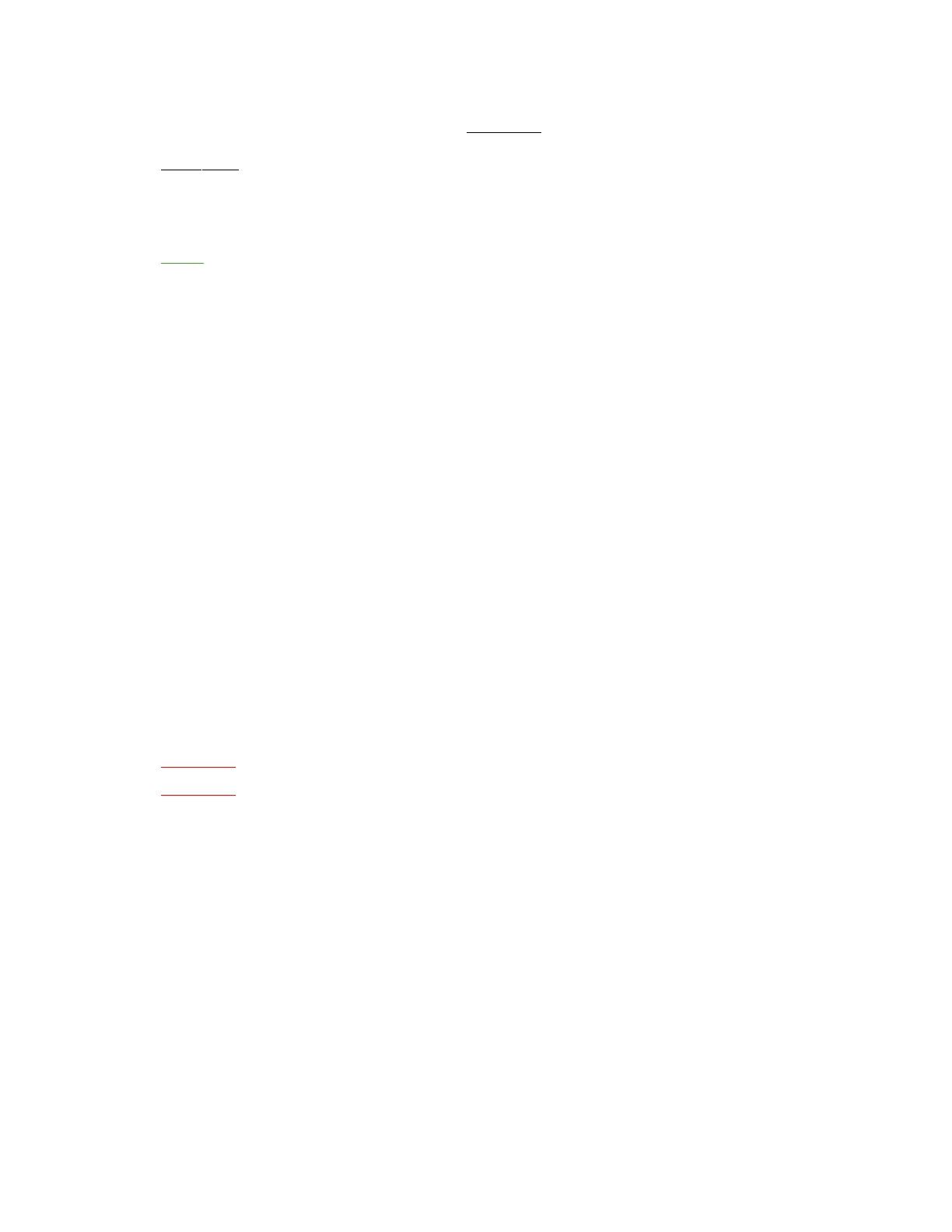